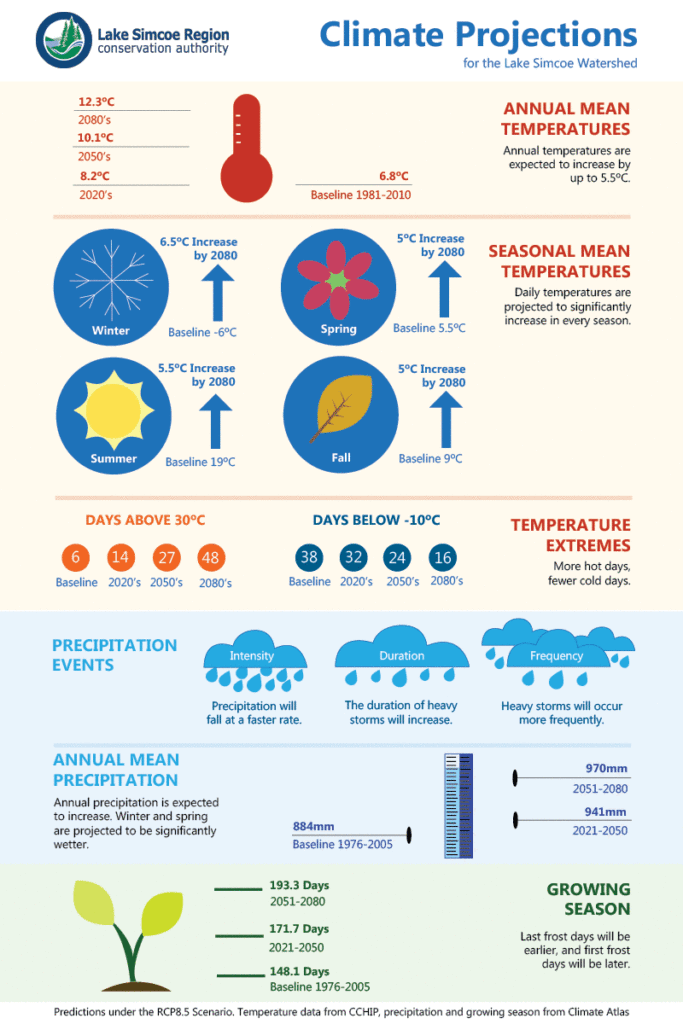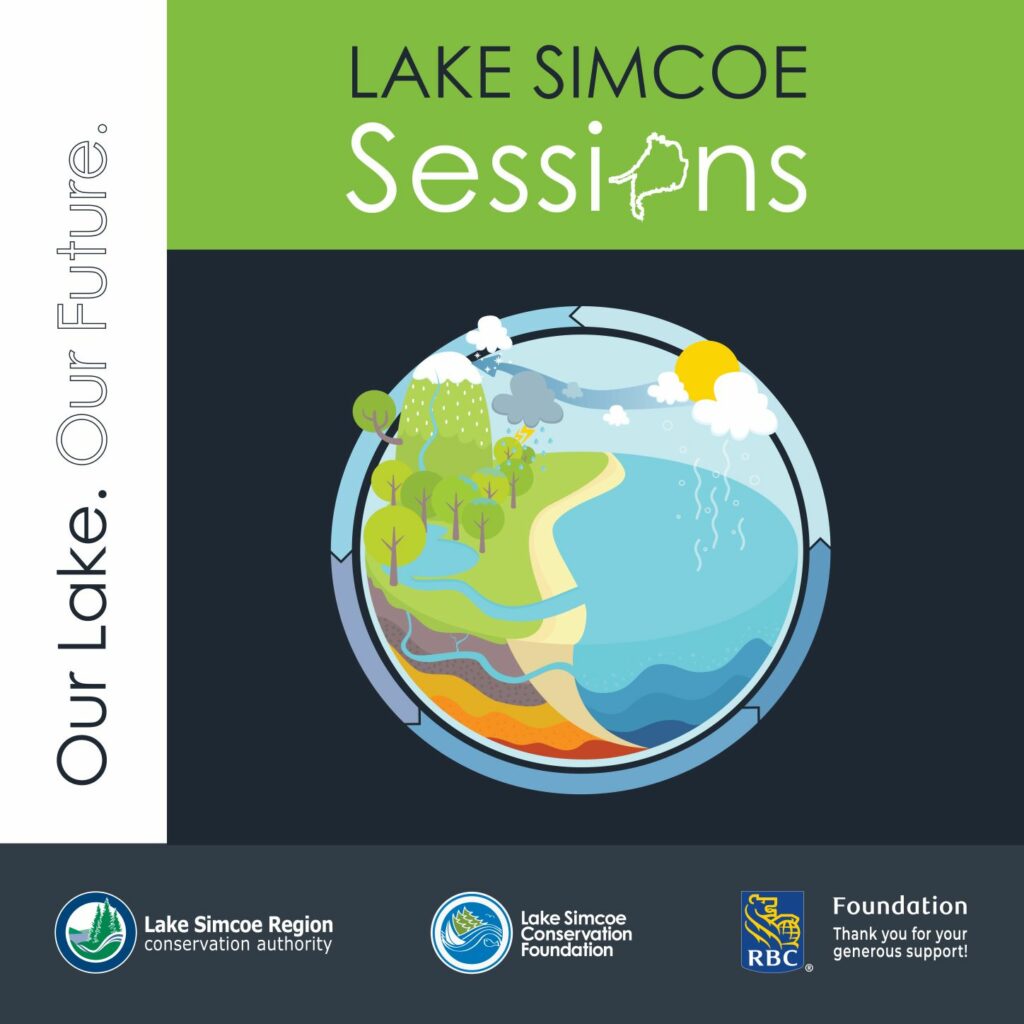
If we do little to change our greenhouse gas emissions, following is a quick and simplified overview of how climate change may affect the Lake Simcoe Watershed and what it means for you.
It’s going to be hotter
Based on a high-emissions scenario (*RCP8.5), we predict more hot days and fewer cold days. Our average number of days above 30 degrees before the 2020s was 6 per year. In this climate change scenario, the 2020s are likely to see a more than doubling of that number, to 14 days per year. In addition, the number of days below -10 degrees Celsius will likely decrease.
It’s going to be wetter
We expect longer more frequent and intense rainstorms with winter and spring both projected to be significantly wetter. This brings the very real possibility for flooding, even in areas where floods have never happened before.
Annual mean temperatures are rising
No, the temperatures aren’t in a bad mood. Mean temperature is an important concept to understand in the climate change conversation. It refers to the average temperature over a year, within the Lake Simcoe watershed. The data shows that the mean global annual temperature has already risen about 1 degree Celsius in the past 100 years, and we’re already seeing the impacts!
That may not sound like much but it’s quite significant. Consider that during the last ice age, which peaked 20,000 years ago, the earth’s global temperatures were likely about 5 degrees Celsius lower than today. A change of 5 degrees, in either direction, may make the planet, in some locations, inhospitable to humans. In that context, 1 degree Celsius is dramatic.
A text description of the information included in the above climate change infographic can be found here.

Expect the best but prepare for the worst
It’s important to note that if we follow through on actions to reduce our greenhouse emissions, like those outlined in the Paris Agreement (an international treaty on climate change, adopted in 2015), we could be looking at better outcomes.
We still need to do our best to lessen our individual contributions to emissions. Some of the easiest and most significant actions you can take include planting a tree, cycling or walking more and driving less, or adopting meatless-Mondays into your weekly meal planning.
Understanding your insurance coverage is another critically important step to ensure you’re protected from the devastation of flooding. Overland flooding is different than sewer back up. Do you know what you’re covered for? Most provinces will not provide disaster assistance if you have a flood and could have purchased overland flood insurance but did not.
Climate Change Resources
Nature Activity – Pollinator Shelters
You too can play an important role in mitigating climate change by creating inviting places and spaces for pollinators to visit and rest. A few ways you can help pollinators thrive are by easing some of the challenges they face by making your garden friendly to these wonderful bugs. Learn how to create a place for pollinators here.

Lake Simcoe Sessions Podcast
Explore the impacts of climate change in the Lake Simcoe watershed with local experts and learn more about the climate change crisis that is unfolding today, and what you can do right now to help build a resilient future. Listen using your favorite streaming platform, or visit here.

Dig Even Deeper
We encourage you to check out the resources we’ve compiled to learn more about Climate Change here.
Contact Customer Service:
Phone: 905-895-1281
Toll Free: 1-800-465-0437
Email: info@LSRCA.on.ca
